Suicide Rates by Profession

We’re going to need a lot more mental health practitioners.
NOTE: If you are suicidal and need help, call 911 immediately, go to the nearest emergency department, or call 1-800-273-8255.
From 1999 to 2016, the suicide rate in the United States increased by a troubling 30%. What's more, there is a clear gender divide in the prevalence of suicide in the United States–men commit suicide at more than three times a higher rate than women however, women’s suicide rates are increasing faster than men’s.
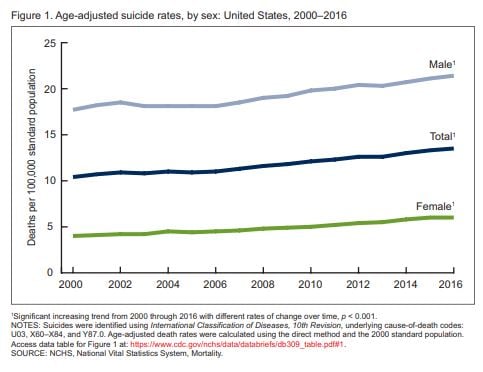
The CDC recently released a report showing the suicide rates of various professions in 2015. Given that job and money trouble ranks among the leading causes of suicide, we thought we'd dive deeper into the data and calculate which professions have the highest and lowest suicide rates and how it varies by gender.
We found that the profession with the highest suicide rate is Construction and Extraction, with 52.1 deaths by suicide per 100,000 professionals, a rate that is over 200% higher than the average profession. By a large margin, the profession with the lowest suicide rate is Education, Training, and Library with a suicide rate of 5.3%, nearly 10 times lower than that of construction/extraction professionals.
Additionally, in this data set, the suicide rate for males is 26.0 per 100,000 professionals compared to 7.1 for women. In fact, for all professions we looked at, men had a higher suicide rate.
RELATED: Nurse Suicides: Unveiling the Shrouds of Silence
***
Before diving into the results, it is worth spending a moment on describing the CDC data we use for calculations. While the report from the CDC was released in November of 2018, the most recent time period it covers is 2015. And the data is taken from just 22 states.
Perhaps most important to note is that the CDC provides suicide data at the highest level of "major occupational group." This splits the entire US workforce into just 22 occupations. As a result, many different sub-occupations are lumped together in just one occupation (for example, nursing, doctors, and dentists are all in one occupation).
Across this data set of 22 occupations in 22 states, the suicide rate in 2015 was 16.9 deaths per 100,000 people, an increase of 10% from 2012.
The next chart shows the suicide rate in 2015, split by major occupation group. While 16.9 is the average suicide rate, the rate varies substantially by occupation.
The staff here at RegisteredNursing.org looked at the suicide rates by profession to gain an understanding of possible patterns and needs of working professionals.
Highest & Lowest Suicide Rates by Profession
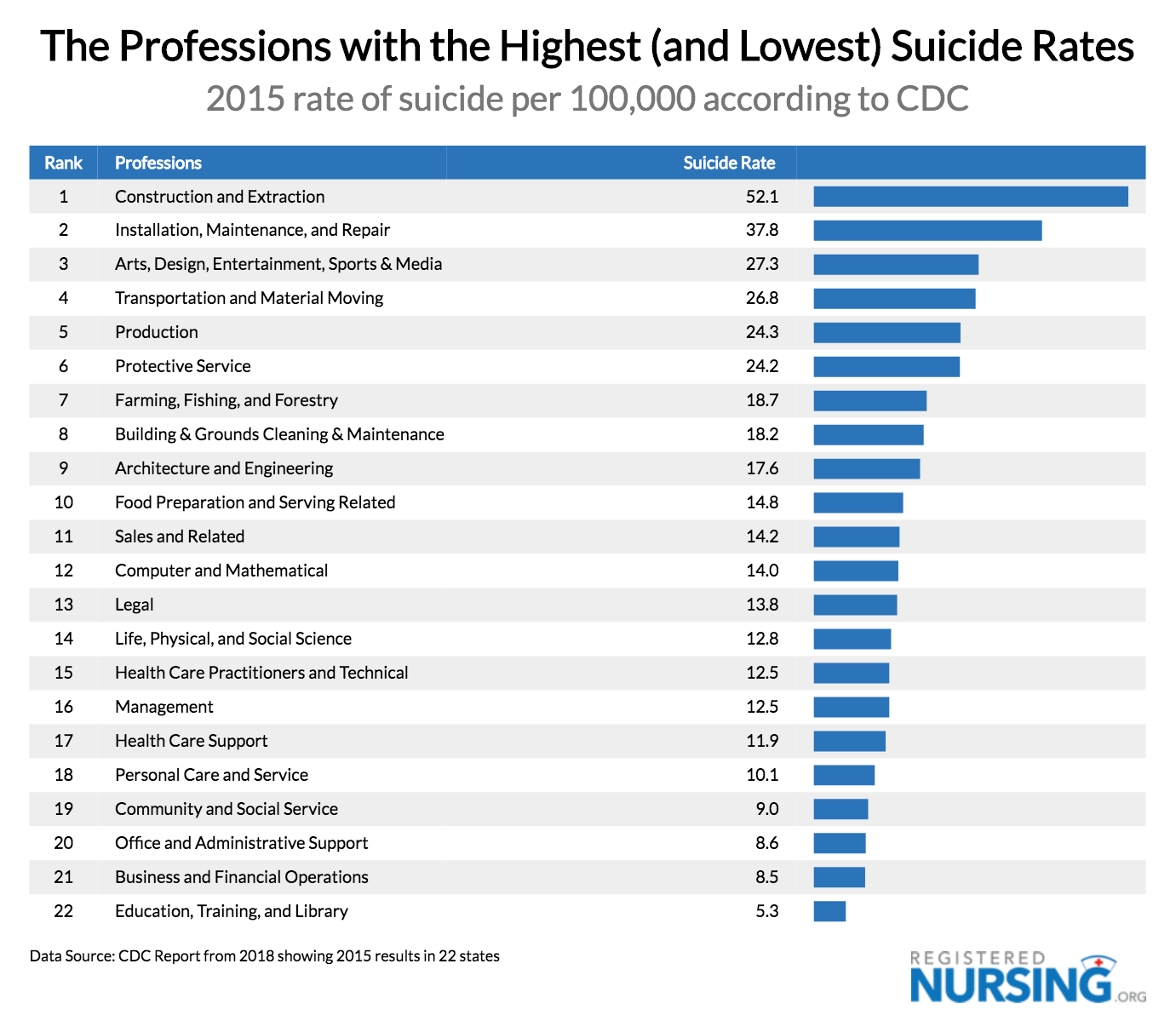
The occupation with the highest suicide rate is Construction and Extraction with 52.1 deaths per 100,000 people, nearly 40% higher than the occupation with the second highest suicide rate. The occupation with the lowest suicide rate is Education, Training and Library with a 5.3 suicide rate compared to 16.9 for the national average.
Health care practitioners and health care support professions see 11 to 12.5 rate per 100,000; this includes nursing professionals.
Do lower paying jobs tend to have higher suicide rates? We next juxtaposed BLS salary data by occupation group with the CDC suicide rates; see our breakdown of RN salary and nurse practitioner salary.
Suicide Rates: Occupation vs Salary
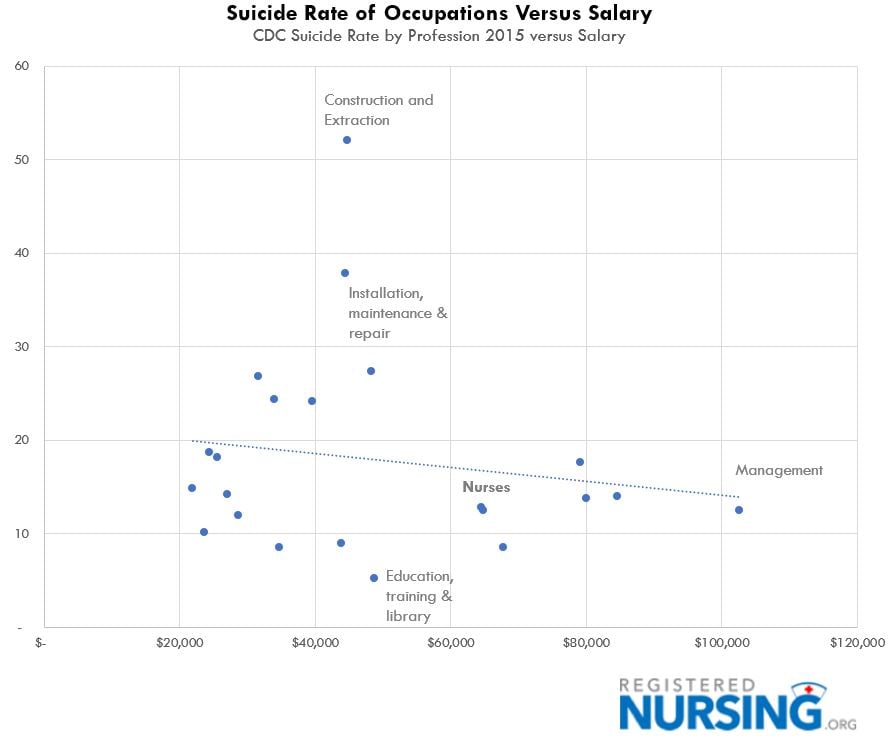
In general, there is a small trend that
The last time the CDC published this suicide rate by profession data was in 2012. How have things changed between then and 2015? The next chart rankings occupations by their increase (or decrease) in suicide rates during this year period:
Increasing & Decreasing Suicide Rates by Profession
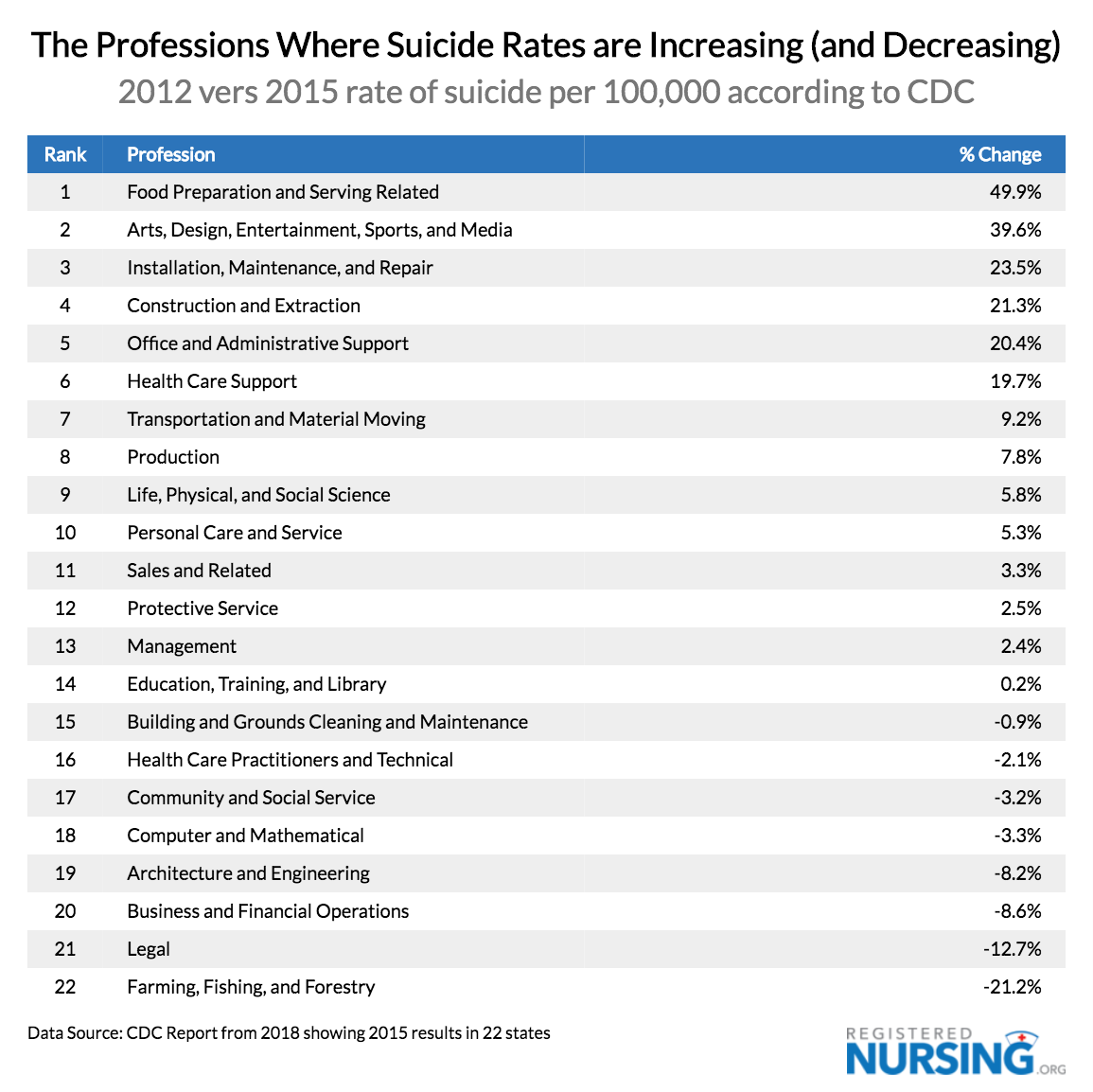
Given that overall suicide rates increased 10% between 2012 and 2015, it's not surprising that most of these occupations have had an increase in suicide rates. Nevertheless, a number of occupation have had increases in suicide rates far in excess of the national average; Food Preparation and Serving has seen an increase of nearly 50% and Arts Design, Entertainment, Sports and Media almost 40%.
Any analysis of suicide rates without discussing gender differences will be remiss in overlooking an important point:
Suicide Rates for Professionals by Gender
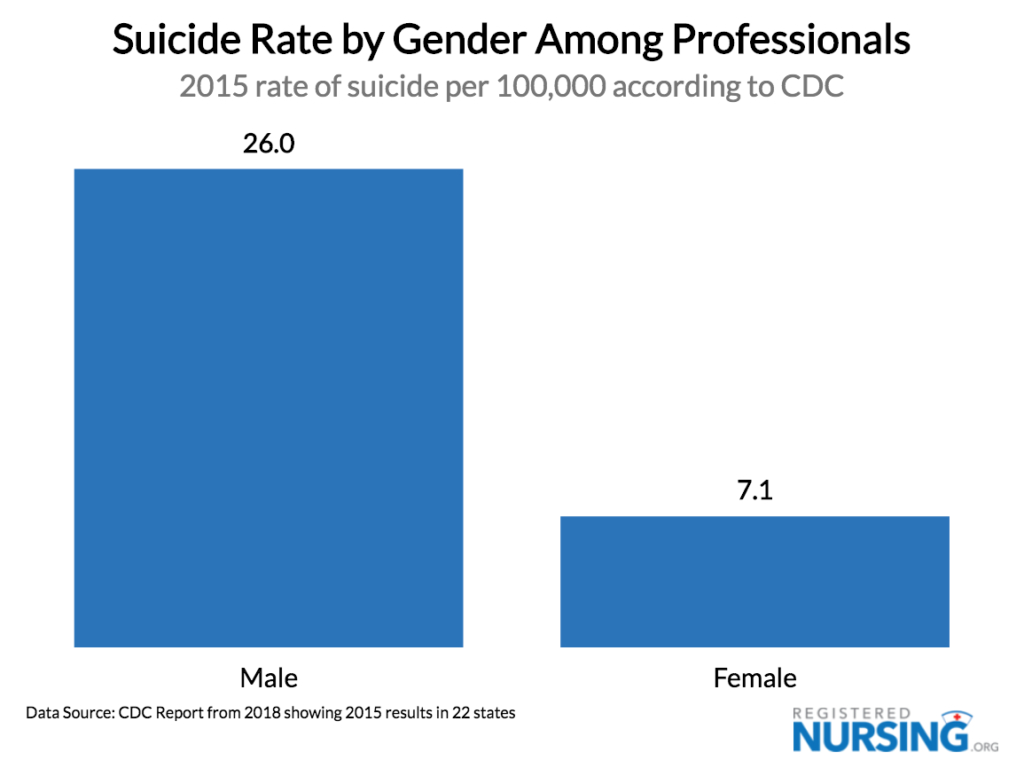
Men across all occupations have a suicide rate of 26.0 per 100,000 people, three times more than females. So are occupations with high suicide rates just an indication that there are a high percentage of men in that labor pool? Not exactly.
If we break down the suicide rate for each occupation by gender, we notice that even for the same occupation men have a substantially higher suicide rate than women.
Highest Suicide Rates by Profession:
Men vs Women
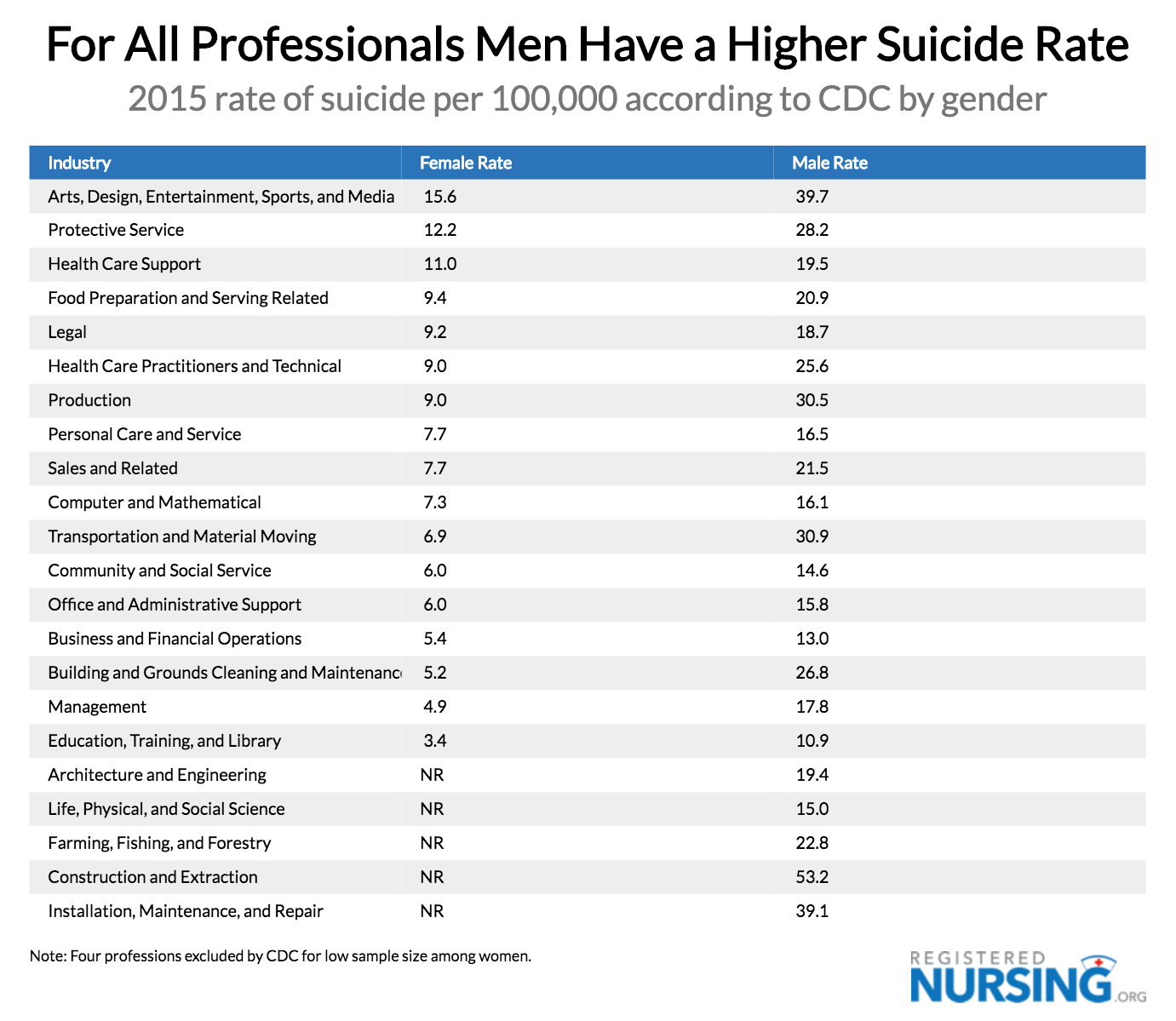
For every single major occupation, men have
Because of
Highest & Lowest Suicide Rates for Men by Profession
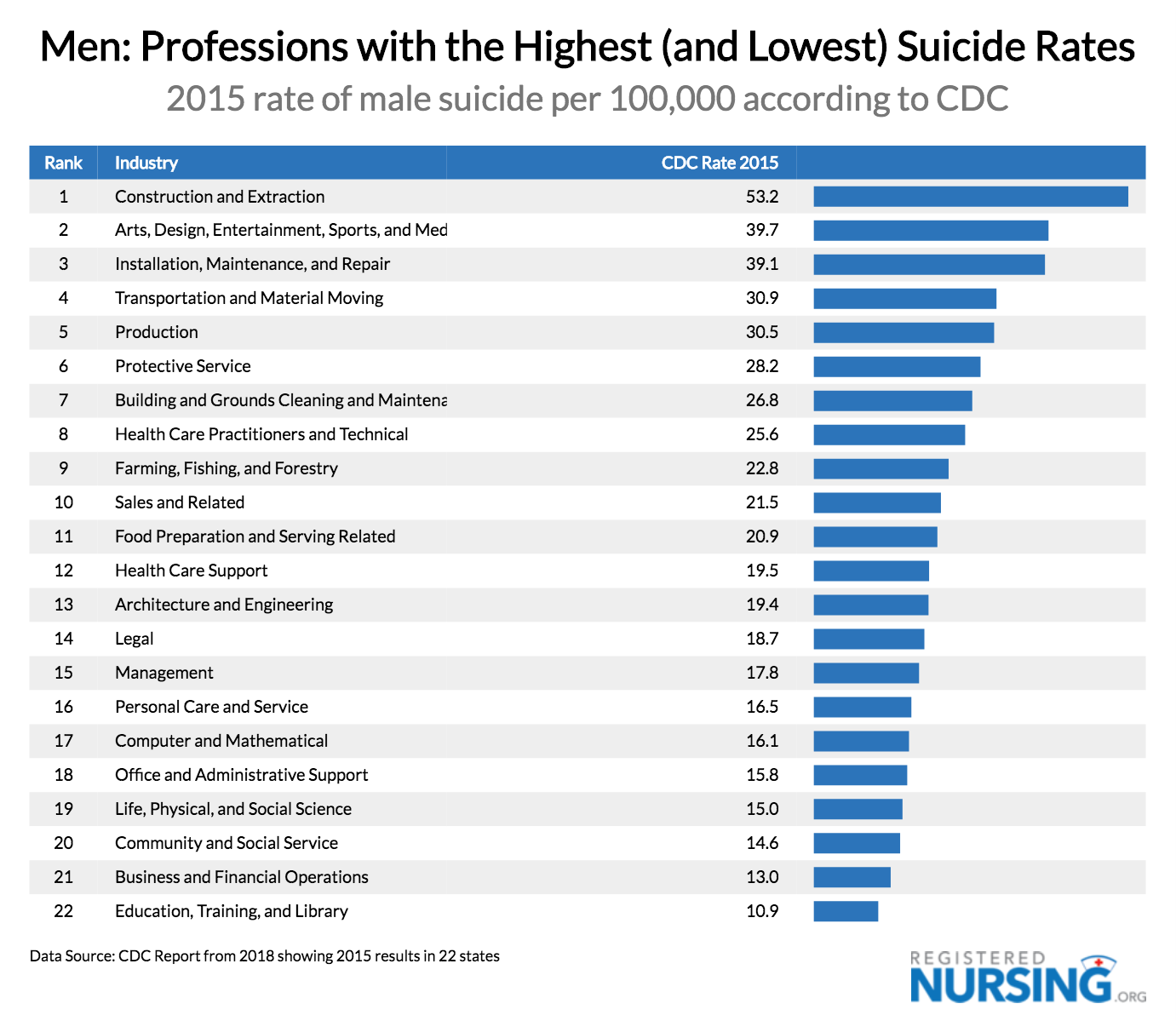
Because men make up most suicides, it's not surprising that the list of professions with the highest suicide rates for men is similar to the overall list for both genders combined. In fact, the top 5professions with the highest suicide rates for men is nearly identical to the top 5 professions with the highest suicide rates overall (though in a slightly different order).
For women, the professions with the highest suicide rates
Highest & Lowest Suicide Rates for Women by Profession
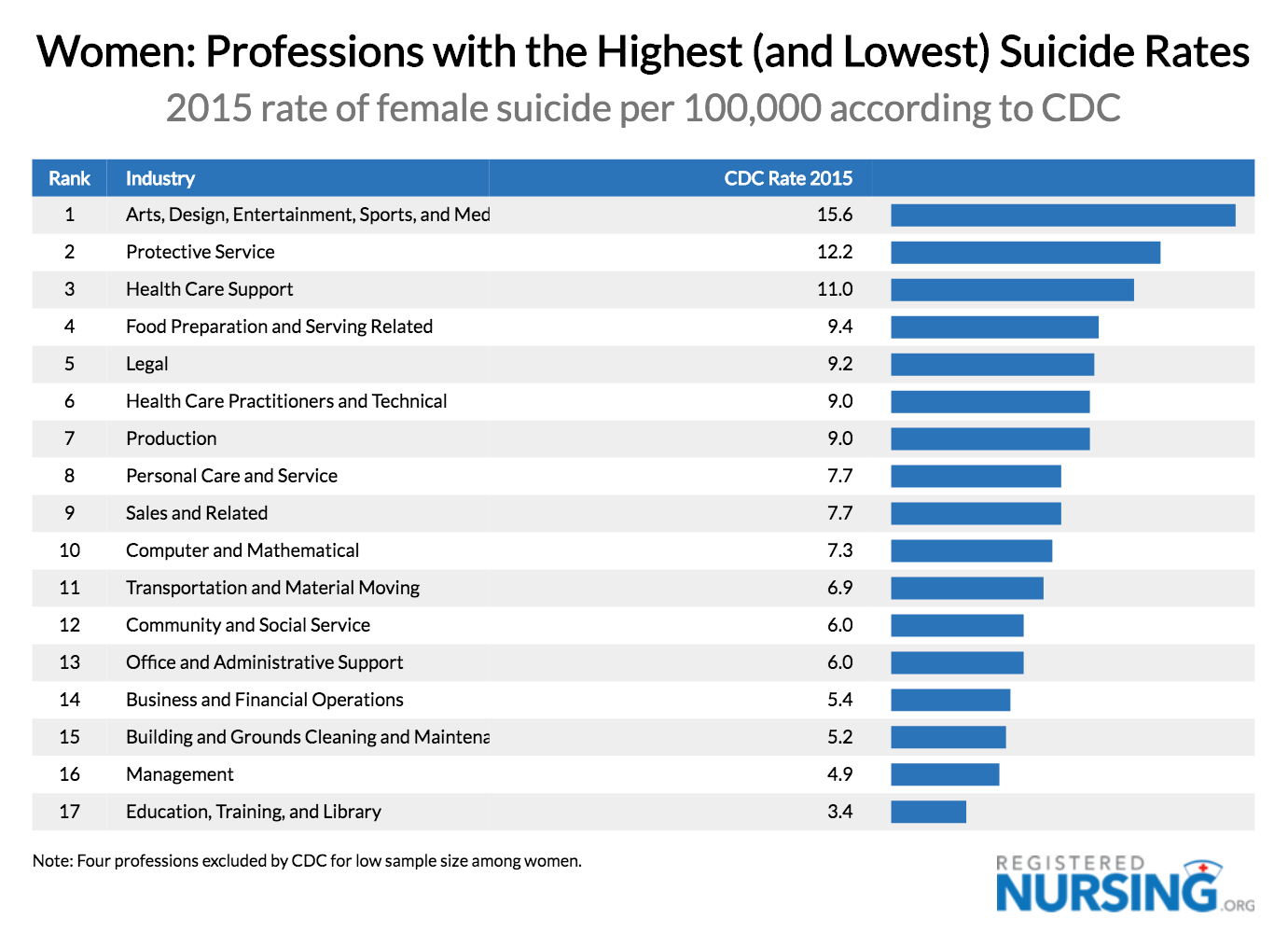
The occupation with the highest suicide rate among females is Art, Design, Entertainment, Sports
The need for psychiatric-mental health nurse practitioners, and in particular, women’s health nurse practitioners is at an all time high considering both health care support and health care practitioners and technical professionals are some of the highest female suicide professions.
***
In America, suicide is a rising problem, especially among men. For most professions we looked at, males commit suicide at a rate 3-5 times higher than women. While the national average is 16.9 deaths by suicide per 100,000 people, some professions have suicide rates almost three times higher than that for men. Even among a single gender, there is a huge variance among suicide rates. Higher paying jobs tend to have lower suicide rates, but low pay doesn't completely explain suicide rates since some professions have about the same compensation but vastly different rates of suicide.
As death rates in America soar from the mental health issues, stress and anxiety, and the Opioid crisis, it's important not to overlook suicide is rising in America and it's an issue that we would be remiss not to address.
Fair Use Statement: Please share our content for editorial or discussion purposes. All we ask is that you link back to this page and give proper credit to RegisteredNursing.org.
